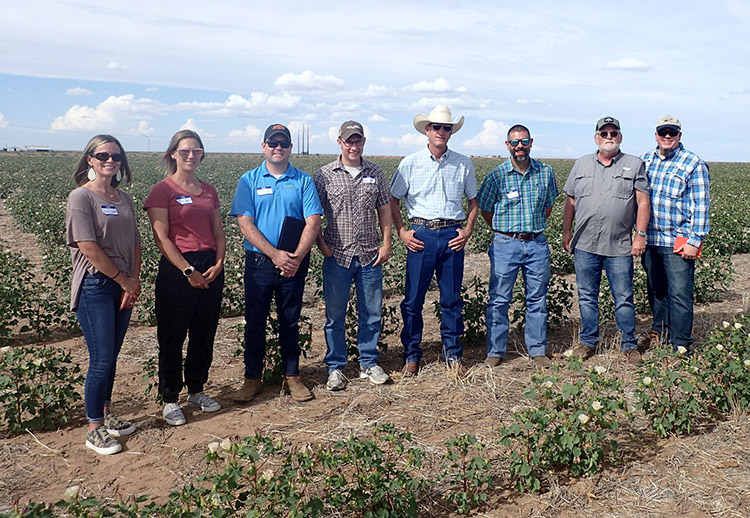September 26, 2022
Climate change is happening, and America’s rural communities are on the frontlines. USDA is leading the way with investments in science and research and climate smart solutions, such as the Partnerships for Climate-Smart Commodities, that also improve the profitability and resilience of producers.
RMA and other agencies are assisting farmers and ranchers as they implement climate smart agriculture production practices on their farming operations. These practices include cover crops, alternate farming methods, and farming operation changes based on shifting climate changes that vary around the country. Wide skip rows and twin rows are gaining interest as innovative practices.
The Oklahoma City Regional office recently participated in a Program Performance Assessment (PPA) project where they met with producers, AIP’s, agents, university representatives, and cotton industry representatives to view new and innovative farming, including extra wide skip row cotton and new irrigation methods.
“Based on the conversations, the benefits of these new practices include water savings, decreased input cost, and reduced nitrogen, while maintaining or increasing value,” explains Regional Office Director Jim Bellmon. “According to the producers we visited with, these practices are yielding the same or above cotton planted in traditional patterns and increasing quality in the product.”

RMA employees on tour cotton fields in Oklahoma as part of a Program Performance Assessment From left to right: Kristen Gallagher (PM), Claire White (PM), Josh Dale (OKC RO), Andre Kowalski (PM), Jim Bellmon (OKC RO), Mariano Lerma (SRCO), Lawrence Ediger (OKC RO), Mark Griffin (SRCO)
Jim’s Regional Office team, along with members of the Southern Regional Compliance Office and RMA’s Product Management, spent a full day touring fields of cotton planted in unconventional patterns including 60” rows, 72” rows, and 80” rows.
“The cotton in those fields appeared to be in better shape than cotton planted on traditional 30” rows and 40” rows,” Jim observed. “With extreme drought in the area and limited irrigation water, the fields visited appeared to have a better chance of making a normal yield compared cotton planted in traditional patterns.”
The PPA team found out that the growers also showed an interest in expanding row widths to 90” and 120” but are hesitant to do so because it is considered uninsurable. As a result, RMA is looking at current policies to see if allowing the expansion row widths makes sense in light of new technology and seed varieties.
“Other areas of concern included removing the FSA Percent Plant Factors and insurance covering whole fields rather than partial fields,” Jim noted. “Research is currently being conducted to see if this is a viable option.”
The RMA team also toured the Texas A&M Research farm located in Bushland, Texas, and learned about new irrigation practices and the state-of-the-art Lone Star gin in Pampa, Texas.
**
I want to thank all the participants for their dedication to this PPA and for engaging with those producers that rely on our program. These projects are so important to the success of our mission!
-Marcia

Marcia Bunger is the Administrator of USDA’s Risk Management Agency (RMA). Prior to her appointment, she served as a County Executive Director for USDA’s Farm Service Agency. A native South Dakotan, Bunger is also the owner and operator of a 2000-acre farm, a cum laude graduate of Augustana College, and the first member of the Asian American and Pacific Islander community and first woman to serve as RMA Administrator.
